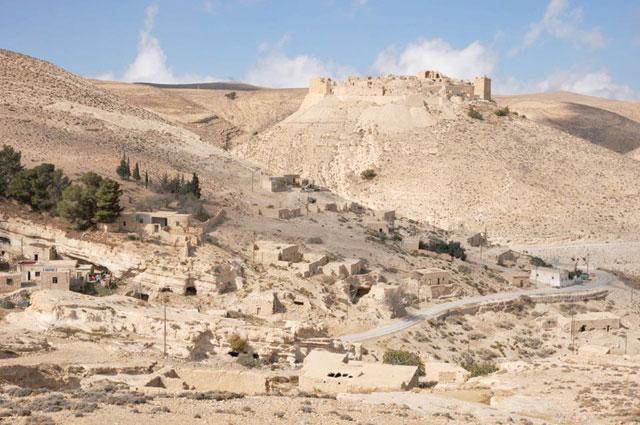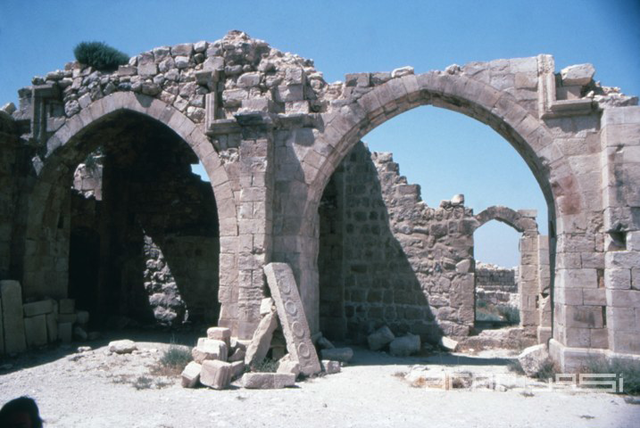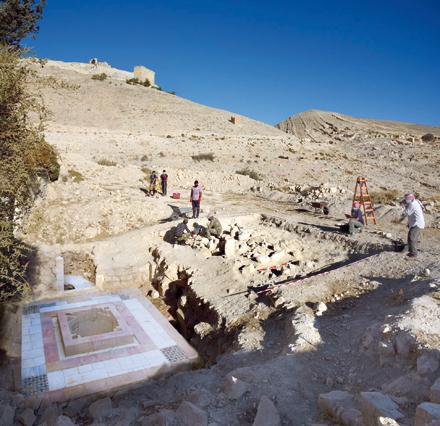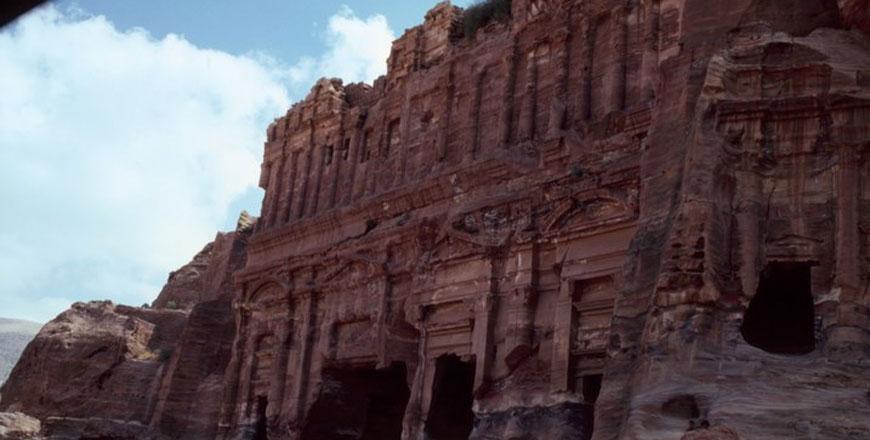You are here
Shobak Castle's commercial role in mediaeval time uncovered
By Saeb Rawashdeh - Oct 13,2018 - Last updated at Oct 13,2018

The small village of Jaya in the foothills of the Shobak Castle (Photo courtesy of Anna Marx)
AMMAN — Besides its military role, the Shobak Castle used to stand as an important commercial centre during the Ayyubid and Mamluk periods, as illustrated by the presence of sugar produced in the area of Shobak in mediaeval Italy, said an Italian archaeologist.
In a lecture titled “Products and productions in the Shobak Castle in the Middle Ages” held at Dante Alighieri Institute, as part of the Heritage Days in Jordan, Elisa Pruno, said “Shobak represents one of the best preserved medieval sites in the Maan region and used to be well known for its fruits and vegetables production due to its high altitude [some 1,300 metres above the sea level]."
Pruno, who is affiliated with the University of Florence, focusses on the mediaeval craft production, which, she said, "allows us to focus on economic and social aspects of the past societies".
Regarding the methodology to investigate an archaeological site to detect interesting information about productions and products, she outlined two main ways: the upstanding building analysis and the excavation.
Choosing the stratigraphic option for the excavation means digging from modern levels to the bedrock, with the collection of the entire fragment assemblages. "After the excavation activities, we elaborate the Harris matrix [a tool used to depict the temporal succession of archaeological contexts] to identify a first relative chronology. Then, we analyse all the assemblages to determine the typologies of all the different remains to better understand the technology, the provenance, the main function [market, food, instruments]," she outlined.
Pruno stressed the functional transformation of an important part of the Crusader castle during the Mamluk period, which was already changed in use by Ayyubids: the so-called "workshop".
"During the Mamluk phases, this area was completely rebuilt: we can see seven basins in the nartex area, a big circular basin and a furnace," Pruno noted, saying that the first hypothesis was that these were wine or olive presses, but researchers could not find traces of organic remains.
However, in 2016, scholars concluded that the Shobak workshop was "a historical soap factory for the production of virgin oil soap made by the ‘hot’ process".
"According to the written and ethnographic documentation, the traditional ‘hot’ process for saponification took place in different stages, and we can suppose that the first of all was the preparation of a paste with water and the ash of particular alkali plants," Pruno highlighted, adding that the mixture was then boiled with olive oil in a large cylindrical tub, heated by a furnace housed in the former Crusader chapel.
After saponification, the hot mix, still soft, was spread on the lower church floor to dry for being finally cut into bars of soap, the archaeologist explained.
Sugar manufacturing was the state monopoly of the Mamluk dynasty (1250-1517), according to written sources on the Shobak Castle.
"There are some written sources that mention the sugar from Shobak, especially in Archivio Datini, in Prato [a place near Florence]," Pruno highlighted, noting that during their excavation, the researchers found sugar pots, the special wares used in the production of sugar.
Regarding pottery, it is the most pervasive material found during the excavations as it is very fragile when used, but almost everlasting when buried in archaeological contexts, she continued, asking "noting that pottery shreds can provide information concerning economy, way of life, chronology, provenance of objects and raw material and so on."
HMPW is a very coarse ware which is found in large quantities in many Jordanian sites. "It is handmade and can be decorated, painted in black or red, sometimes with geometric patterns," the Italian expert elaborated.
"I can say more precisely that very often we have different kind of HMPW in the same stratigraphic context. Until now I’m pretty convinced that it is not possible to individuate a chronological seriation [archaeological dating method] founded on the different colour and pattern of the decoration," Pruno continued, stressing that there are little differences between the fabrics of Petra Valley and Shobak pottery, which indicates the existence of the workshop inside the castle.
"There are other kinds of remains, slag and production remains which leads us to suppose that some iron and glass workshop existed in Shobak. But to be sure, we need more investigations," Pruno concluded.
Related Articles
AMMAN — Petra and its hinterland, particularly Montreal (Shobak Castle) were part of a defensive system in 12th and 13th centuries.
IRBID — The findings of the Italian archaeological mission in Jordan were highlighted at the 15th International Conference on the History an
AMMAN — The area of the Royal Tombs in the city of Petra contains the Corinthian Tomb, which is between the Palace Tomb and the Silk Tomb.Th

















